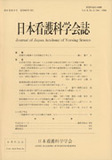Japanese
English
- 販売していません
- Abstract 文献概要
- 参考文献 Reference
- サイト内被引用 Cited by
要旨
急性心筋梗塞の一重症患者(70歳,男性)の慢性期において,入浴中の一連の動作,すなわち,湯をかける,石鹸で清拭する,洗髪する,入湯するなどの動作時での収縮期血圧,拡張期血圧,心拍数およびPressure-Rate Product(PRP)の変化について,すでに発表した28例の急性心梗塞患者の成績と対比し検討した.本症例の入浴時では,湯かけ,および石鹸で清拭する動作時に著名なPRPの増大が示された.これには病態の重篤性および加齢による変化に加え,体動による力学的負荷,等尺性負荷,Valsalva効果,ならびに心拍出量の増大等が関与しているものと思われた.また,本症例の入湯時においては,収縮期血圧の著明な下降が示され,血管反応性の低下,および心機能低下による血行力学的不安定性が示唆された.ついで,湯の温度を38℃から徐々に44℃まで上昇させて入浴した場合では,血圧およびPRPの変化は軽度であり,安定性が示された.しかしながら,心拍数は41℃以上より上昇し温熱作用による負荷の増大が認められた.本症例のような高齢かつ重篤な急性心筋硬塞患者における入浴に際しては,心負荷が増大しないレベルでの配慮がなされるべきである.
Abstract
Changes of systolic and diastolic blood pressure, heart rate, and pressure-rate product(PRP) during bathing (washing body with soap and shampooing, showering and bathing in hot water) were studied on a 70 year-old male patient in chronic phase with extensive acute myocardial infarction(AMI), comparing with the data of 28 patients with AMI in our previous paper.
During having the bath, the PRP increased more significantly than the data in the previous paper.
This significant increase may be attributed to the severity of the disease and the old age, in addition to the exercise load, the isometric load, the Valsalva maneuver and the increased output.
Bathing in hot water, the systolic blood pressure decreased extremely. It is considered that this phenomenon was due to the hemodynamical instability by the weak vasomoter reflex and the low cardiac function.
The changes of blood pressure and PRP during bathing were not so significant when the temperature of water was increased gradually from 38℃ to 44℃.
On the other hand, the heart rate was increased when the temparature of the water was higher than 41℃.
We must always take care of patients not to increase cardiac burden during bathing especially for the old people with AMI such as the present patient.
Copyright © 1986, Japan Academy of Nursing Science. All rights reserved.


